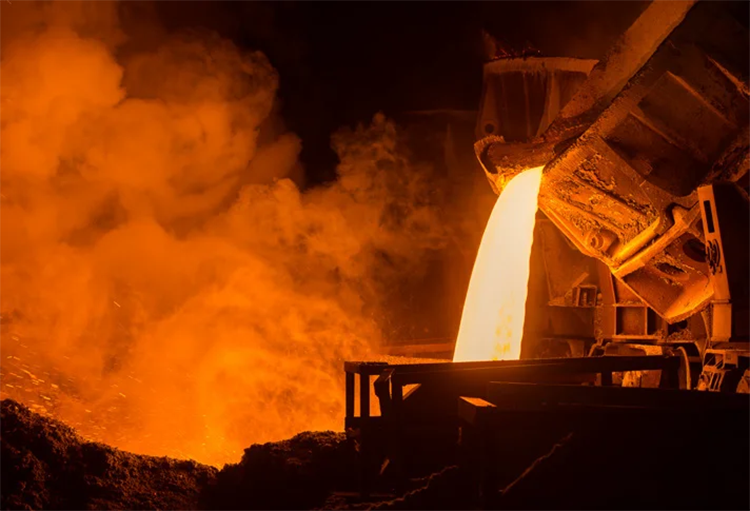In the realm of modern steel production, refractory materials play a vital role. They not only protect the linings of steelmaking furnaces from the extreme temperatures, molten metals, and slag, but also directly influence the efficiency of the steelmaking process and the quality of the final steel products. This article delves into the types, properties, and applications of refractory materials in steelmaking.
Importance of Refractory Materials
Refractory materials are those that can maintain their physical and chemical properties under high temperatures, making them essential components of steel furnace linings. During steel production, these materials must withstand temperatures as high as 1600°C to 1700°C, along with the chemical erosion from molten metal and slag, and mechanical stress. Therefore, selecting the right refractory material is crucial for enhancing steelmaking efficiency, reducing costs, extending the service life of furnace linings, and ensuring the quality of steel products.
Types and Properties of Refractory Materials
1.Magnesia-Carbon Bricks
Magnesia-carbon bricks are among the most commonly used refractory materials in steel furnace linings. Composed mainly of magnesia and carbon materials, these bricks offer excellent slag resistance and thermal shock stability. They are widely used in critical areas of converters, electric arc furnaces, and induction furnaces, such as furnace mouths, furnace caps, and furnace walls. The higher the carbon content in magnesia-carbon bricks, the better their slag resistance, although this can reduce their thermal shock stability.
2.Magnesia and Silica Refractory Materials
Magnesia-based refractory materials are known for their strong resistance to basic slag corrosion, making them suitable for working layers in ladles and tundishes. Silica-based refractory materials, with their high thermal stability and lower cost, are applied in less critical areas of the furnace.
3.High Alumina Refractory Materials
High alumina refractory materials possess high refractoriness and resistance to chemical erosion, making them ideal for the furnace walls and bottoms of electric arc furnaces. These materials maintain structural stability at high temperatures, making them indispensable in the steelmaking process.
4.Applications of Refractory Materials in Steelmaking
Converter Steelmaking
In converter steelmaking, refractory materials must endure intense temperature fluctuations and slag erosion. The furnace mouth and cap, which are in direct contact with slag and furnace gases, are typically lined with magnesia-carbon bricks. The furnace lining on the charging and tapping sides is selected based on the level of erosion, often using different grades of magnesia-carbon bricks.
5.Electric Arc Furnace Steelmaking
In electric arc furnace steelmaking, the furnace walls and slag lines are exposed to high-temperature arc radiation and chemical erosion from slag. These areas are typically lined with high-quality magnesia-carbon bricks. The furnace bottom and banks are constructed using magnesia-calcium-iron dry ramming materials or high-grade magnesia ramming materials.
6.Induction Furnace Steelmaking
In induction furnaces, the furnace cover and spout areas need to withstand high-temperature radiation and slag erosion. Therefore, the refractory materials used in these areas must have excellent high-temperature performance and chemical resistance. The furnace cover is often lined with high alumina castables, while the spout is lined with mullite-based or corundum-based plastics.
7.Maintenance and Repair of Refractory Materials
Refractory materials are subject to continuous erosion and damage during use, making regular maintenance and repair essential. Converters typically use magnesia-carbon bricks and other repair materials for maintenance, while electric arc furnaces and induction furnaces utilize magnesia spray materials and magnesia-calcium spray materials for repairs. These repair materials can quickly solidify at high temperatures, effectively extending the service life of refractory materials.
Conclusion
Refractory materials are indispensable in the steel industry, and their types and properties directly impact the efficiency and quality of the steelmaking process. As steelmaking technology continues to evolve, the demands on refractory materials are also increasing. Therefore, continuous research and development of new refractory materials to meet the more stringent steelmaking environment is key to the ongoing advancement of the steel industry.
For more information or to inquire about our high-quality refractory products, please contact us at:
Tel/Whatsapp: +86-13903810769
E-posta: soruşturma@rsrefractorychina.com
By understanding the importance of refractory materials and selecting the right ones for your specific needs, you can enhance the efficiency and longevity of your steelmaking operations, ensuring high-quality steel production.

